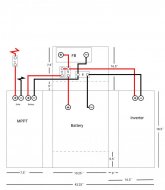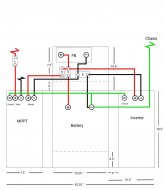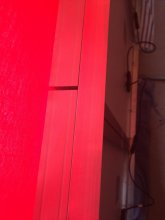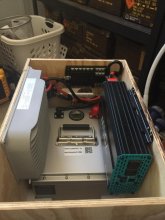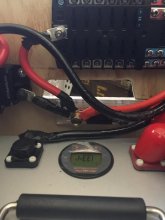Hi,
Hope this hasn´t been answered somewhere already but I couldn´t find it.
Currently I´m building a 400W solar power system with 200Ah LiFePO battery (12V). I was wondering what gauge wire I should use for grounding the system to chassis? My system is positioned next to one of the wheel wells and I was planning to ground it to one of the struts going accross the wall of the van. The cable is going to have to be around 2-3 ft. long.
I have attached a diagram of my system. I followed Will Prose video for the 400W system. (The only difference is I´m using a Renogy 700W inverter instead of the one he uses and a 200Ah LiFePO battery instead of sealed lead acid. All other components are the same.)
Hope this hasn´t been answered somewhere already but I couldn´t find it.
Currently I´m building a 400W solar power system with 200Ah LiFePO battery (12V). I was wondering what gauge wire I should use for grounding the system to chassis? My system is positioned next to one of the wheel wells and I was planning to ground it to one of the struts going accross the wall of the van. The cable is going to have to be around 2-3 ft. long.
I have attached a diagram of my system. I followed Will Prose video for the 400W system. (The only difference is I´m using a Renogy 700W inverter instead of the one he uses and a 200Ah LiFePO battery instead of sealed lead acid. All other components are the same.)



